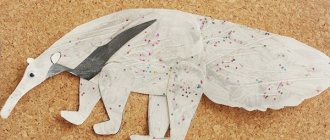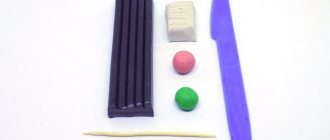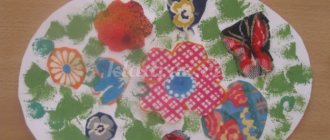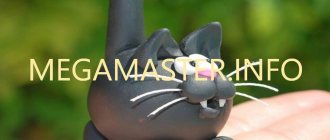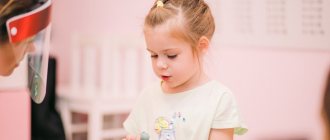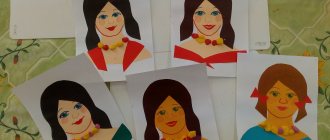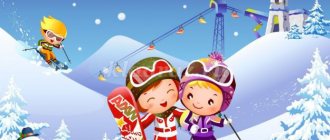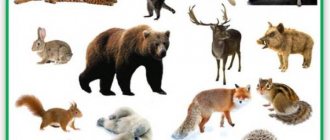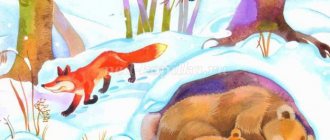In 3-4 grade
Simply gluing pieces of paper onto paper will no longer captivate ten-year-old children. The tasks need to be more challenging and creative.
The most popular options:
- modular appliques - complex silhouettes from parts;
- mosaic of geometric shapes;
- ornamental panels with a selection of colors;
- 3D applique craft made from leaves folded into a cone.
Combined techniques can be proposed in one work. Joint creativity will also arouse interest - a proposal to implement one idea together or three. This activity will also teach children to negotiate and work in a team. Gluing corners for a voluminous appliqué will promote perseverance and develop fine motor skills.
Dress for a doll
Children can make a dress for a girl even in kindergarten, so in elementary school the task needs to be complicated. It is necessary to convince children in advance that the dress must have an original cut, details, and accessories. Children can already come up with and depict the silhouette of the Queen of Autumn on their own.
Another complication of the topic is three-dimensional work. Old Barbie will probably be found in any family with girls.
Procedure for working on a three-dimensional model:
- Sketch, selection of material.
- Making a base from fabric or paper napkin.
- Gluing the leaves to the base.
Accessories can be chosen from natural or doll-like ones. For a formal outfit, sparkles, beads, and beads are useful. In addition to the dress, you can come up with a spectacular umbrella, fan, and hat. The doll itself will not suffer from such work.
Beauty Autumn
Children in grades 2-3 can also draw a face on their own. It is proposed to use the leaves to create a hairstyle and accessories. Despite its apparent simplicity, the work requires a creative approach, selection of colors and shapes. It is worth discussing in advance how students see this person - a fairy fairy in a light dress, a girl wrapped in a collar, or a queen in a ball gown.
Other photo ideas
The teacher planning the lesson needs to take into account that the leaves brought by the children may be of the same type - collected in the yard next to the school. To have a larger assortment of shades, you will have to take care of unusual colors and textures personally, starting the collection in the summer. To prevent crafts made from natural materials from losing their shape, finished works can be sprayed with hairspray.
Napkin applications
This application is very useful for children, as it strengthens fine motor skills. The napkins are first torn into small pieces by hand, and then balls are rolled out of these pieces. The balls are glued to the base of the animal image. Today, napkins are available in a variety of colors and designs. Therefore, children's animal applications can turn out to be very interesting and colorful.
Applications from other available materials
Sometimes the most unexpected materials are suitable for applique animals. For example, to imitate the wool of a lamb, you can stick pasta “horns” on paper, and it will look like it’s alive. Rabbit skin can be made from white or gray threads. You just need to choose thicker threads, for example wool.
To make an applique of a hedgehog, it is appropriate to make its body from buckwheat glued to paper. And the body of a chicken or a bear is made of millet.
A very convenient material for applique animals is plasticine. It is easy to process, painted in different colors, and it is also a favorite material for children for various crafts. Small pieces of plasticine are simply kneaded in your hands and applied to the base drawing for applique until the entire picture of the animal is painted in the desired color. This results in a 3D effect.
Cotton wool applications
The cotton wool can be glued simply in pieces, or in rolled balls. For example, a lamb looks natural when the wool is glued on it with balls. The picture looks three-dimensional. You can even paint the cotton wool with paints, and then you will get a real children's masterpiece.
Progress of the lesson:
V. That's right guys - this is a hedgehog . Let's look at it (showing illustrations and pictures of a hedgehog )
.
B. Look how small his muzzle is, elongated, covered with hairs. Beady black eyes. He sees poorly, but his sense of smell is excellent, his paws are strong with small claws. And on his back he wears prickly needles.
Q. Why do you think a hedgehog needs needles? (to escape from enemies)
Q. Guys, do you know that the hedgehog does not store supplies for the winter, he sleeps soundly until spring. He also sleeps during the day and hunts at night. It also brings great benefits in that it destroys insects and fights against rats, mice, and poisonous snakes.
Productive activities under the guidance of a teacher. Tell the children that they need to take the desired color of paper and tear it into small pieces. Then take a brush, dip it in a jar of glue, smear the product and glue it onto the template with the finished design. Draw children's attention to the fact that they need to select pieces of paper by size and color, in accordance with the presented sample of the finished product.
Q: What did we do today?
What difficulties did you experience?
You all did great today, this concludes our lesson.
Artistic and aesthetic development. Silhouette applique “Wild Animals” in the middle-high group Goal: to introduce children to silhouette applique; teach middle-aged children to stick silhouettes of animals; teach senior preschool children. Abstract of the educational activity “Hedgehog”. Broken applique. Senior group Goal: Creating a social situation of development in the process of productive activity, broken applique “Hedgehog”. Tasks: Create conditions.
Source
